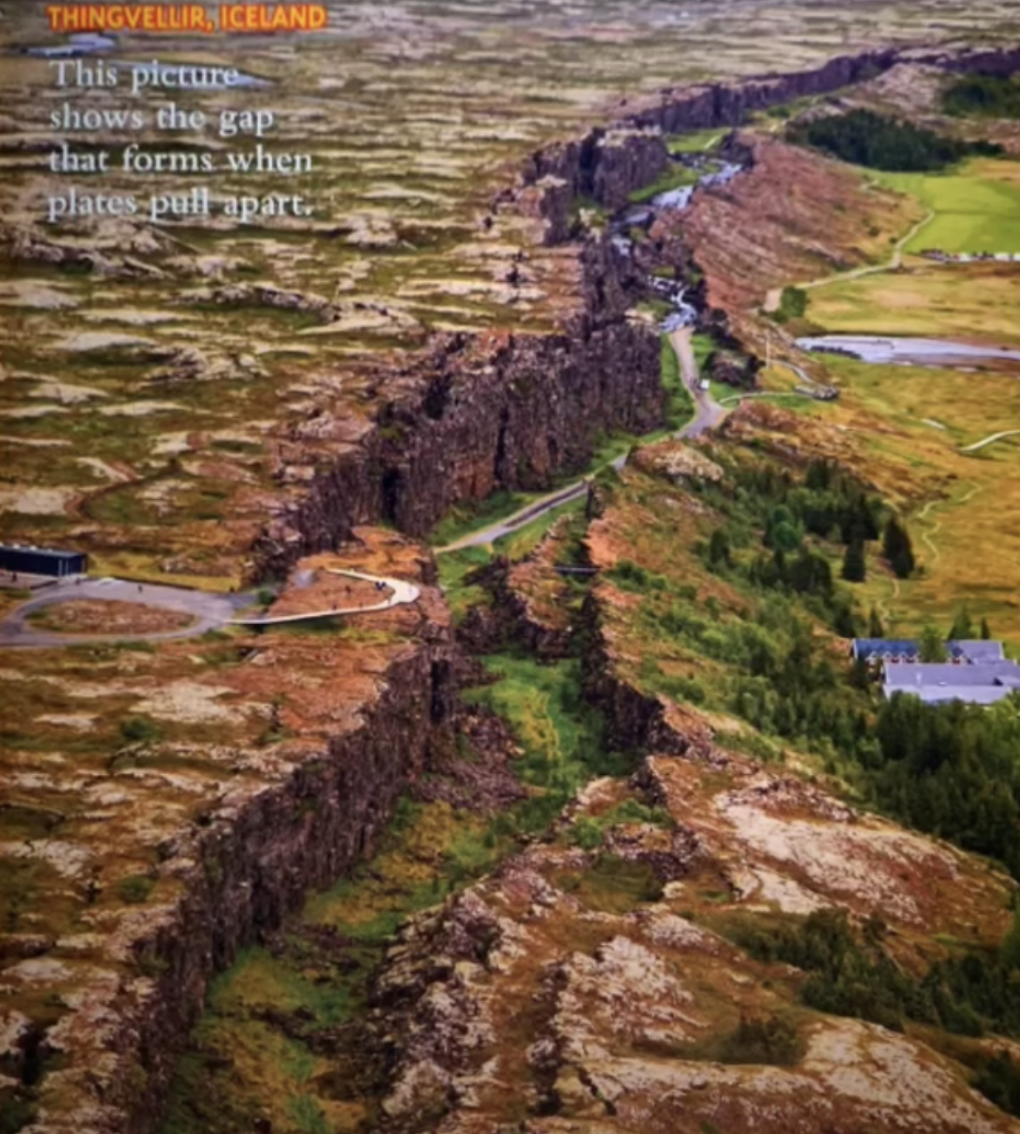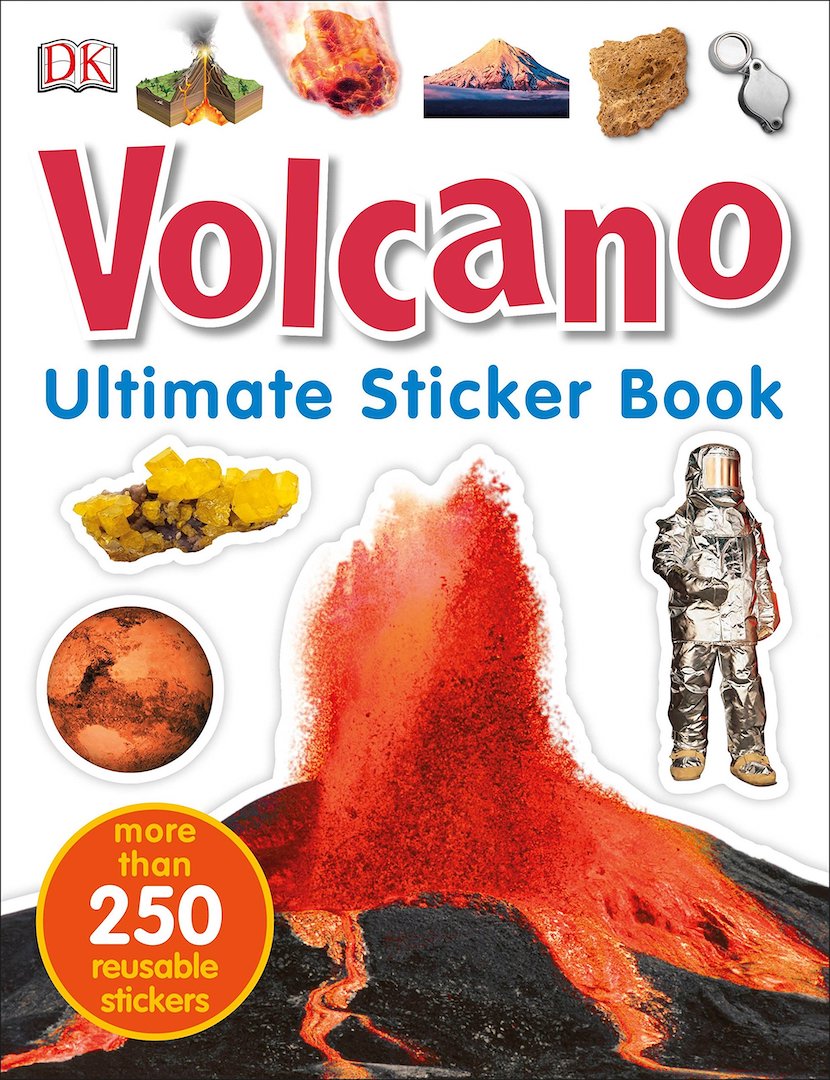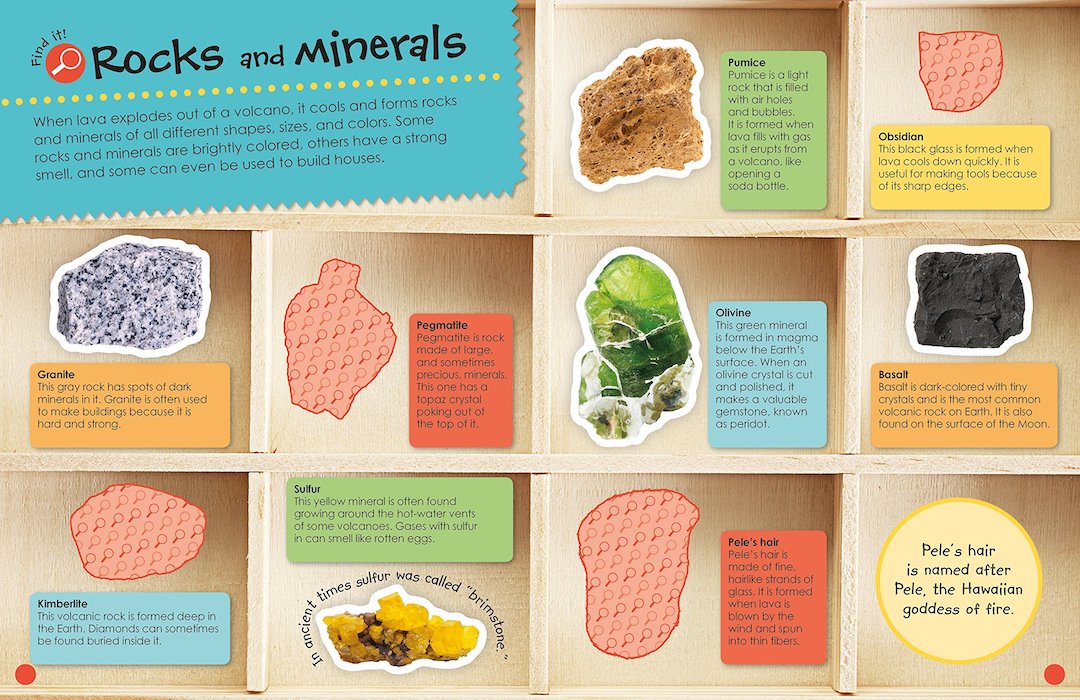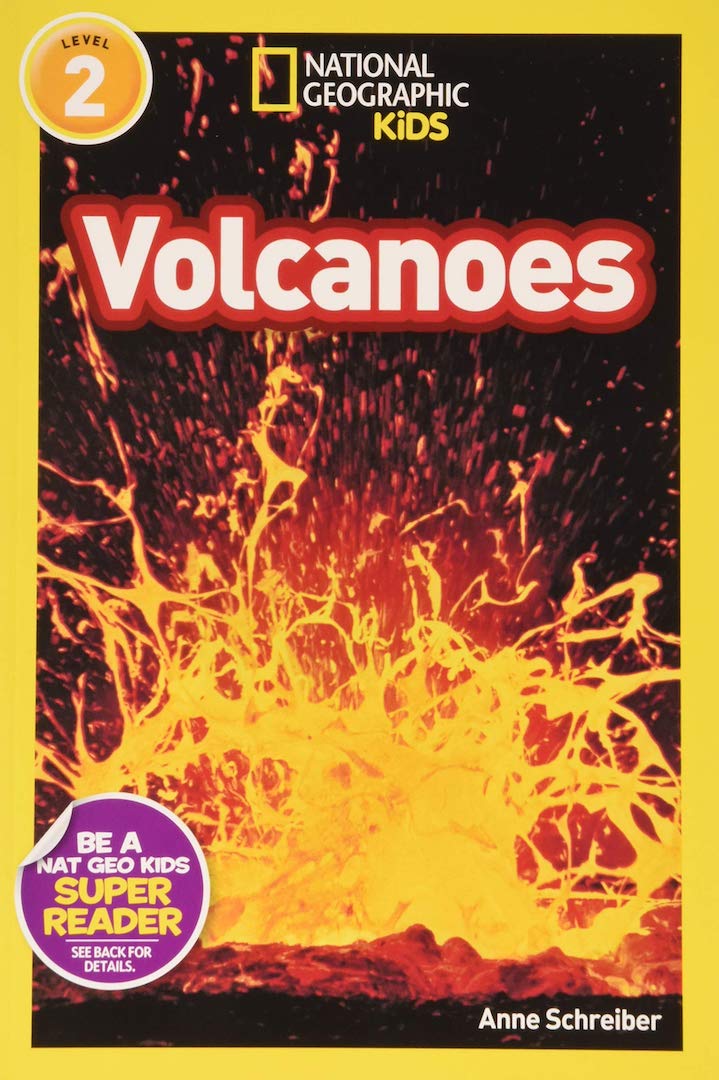The start to any Playdatebox is always a fun children’s picture book, but this month, there’s a bit of an exception. Of all of the books I studied (and I looked at many) as we learned about volcanoes, there was one stand-out I think should be on every Volcano-loving child’s bookshelf
Ultimate Volcano Sticker Book (ages 4-9)
The one-on-one time The Ultimate Volcano Sticker Book generated for me and my grandson as we sat together to assemble it is what earned my respect. More than a simple sticker book, it’s a reference book that allows a young child to manipulate the pages and colorful stickers in a way that seemed to capture his imagination in an especially effective way. I still am not quite certain why he loved this book so much, but we read it a dozen times together.
I think it was the puzzle-like quality that made it so fun. Each page features several shaped areas the same shape as the sticker that belongs in that spot. Placing stickers in the right spots is a bit like assembling a jigsaw puzzle and he clearly enjoyed the challenge. He assembled his sticker book, and then the copy I bought for his sister, and then the spare I had gotten for myself.
Volcanic Rocks
One page that held particular fascination was the page of volcanic rocks. See an example in the image above. Each sticker box (the area covered in magnifying glass icons) matches the shape of one of the colorful stickers. The matching sticker also corresponds to the definition, so once you have the sticker in place, you can read and learn all about each type of rock. It became a game to learn and remember the different names: obsidian, granite, pumice, olivine…He would remove the stickers and place them again and again as he learned the words.
Smithsonian “Little Explorer” Volcanoes (ages 4-6)
There are so many great volcano books on the market, I think you couldn’t go wrong, but here are two more that hit the sweet spot of “just enough text” to teach without being visually overwhelming:
Beginning with a fascinating look at the Mount St. Helen’s eruption and the progressing through page after page of interesting information and great photos, the Smithsonian Little Explorer Volcanoes book by Martha E. H. Rustad is also a superb book.
I liked the fact that this book covers some of the dangers of volcanoes and then contrasts the dangers with the benefits. This makes it easier to reassure a little one that a volcano is not likely to ever harm them or their family. If you spend long enough talking about volcanoes, these kinds of fears are almost certain to surface.
National Geographic Kids: Volcanoes (ages 5-8)
For beginning readers, this National Geographic Kids book, Volcanoes, by Anne Schreiber is a great option. What I especially appreciated about this book was its attention to explaining complicated scientific vocabulary using photos and images, rather than simply sticking a definition in the glossary at the back. For example, many books on volcanoes talk about shifting plates, but this book shows what the landscape actually looks like when this happens. It’s a great example of a book that explains these ideas without talking down to a child.

Detail of a page from Volcanoes, by Anne Schreiber.
While there are many great options to choose from, we think you’ll be pleased with any of the above for your at-home library!




